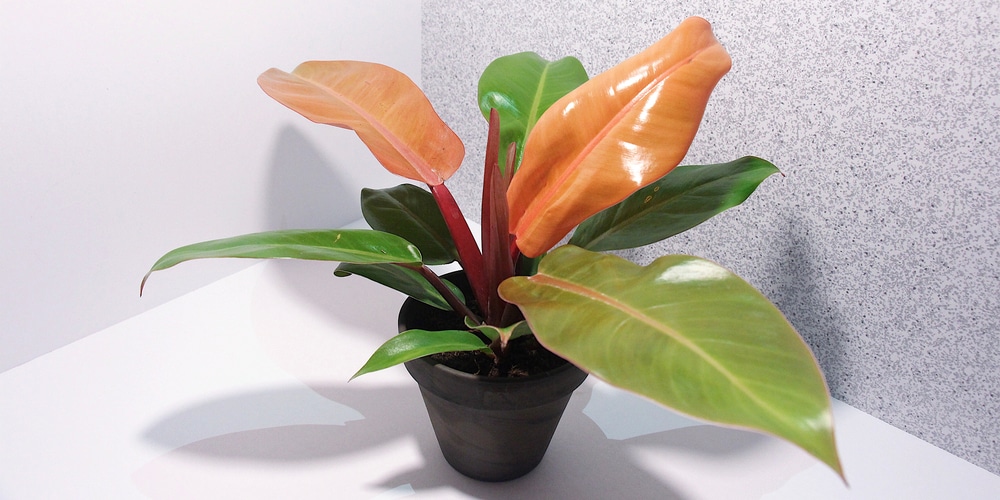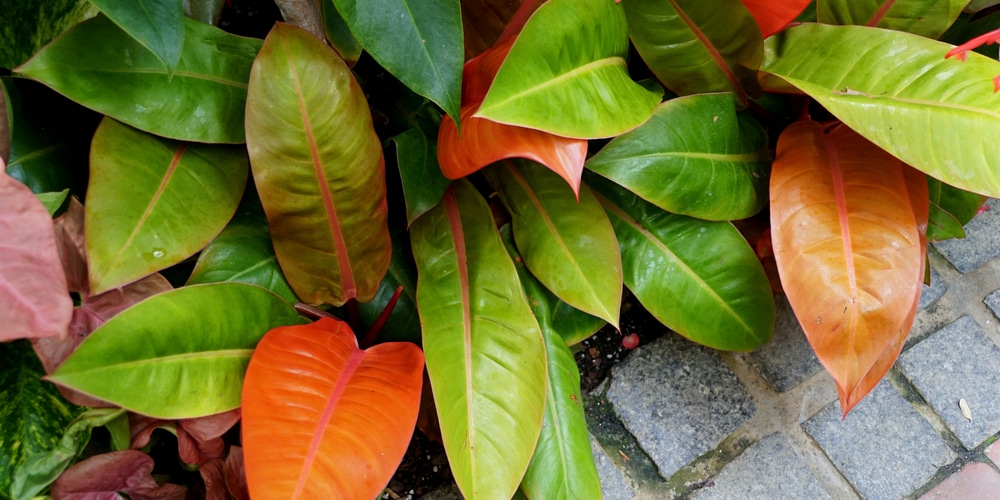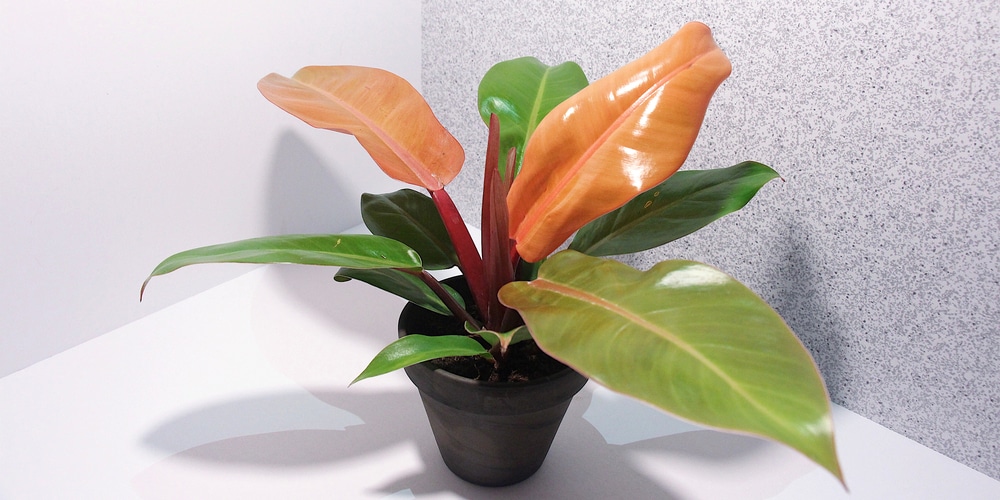The philodendron prince of orange originates from Central to South America. They are commonly found in tropical and subtropical regions and, in particular, the rainforest of Brazil. The plants have heart-shaped leaves and are a terrestrial climbing plant that’s commonly grown as a house plant. Let’s look at how to grow and care for a philodendron prince of orange plant.
What is a Philodendron Prince of Orange

The Philodendron Prince of Orange is commonly called an orange prince or orange headed tree. It is part of the Araceae family and has eye-catching foliage that’s yellow, orange, and green. The new leaves are orange when they first grow and will turn green with maturity.
The plant can grow up to a height of 3 to 4 feet but can get taller in the wild. The leaves can extend more than the plant’s actual height. Like all philodendrons, the prince of orange has poisonous properties and should be kept away from pets and children.
- All of our listings have very representative pictures of what you would receive.
- This plant comes fully rooted in a 6" pot, ready to grow in and your beautiful home or your office.
- California Tropicals
- Perfect gift for any occassion!
How to care for a Philodendron Prince of Orange
Philodendron Prince of orange plants are easy to care for as long as you get the basics right. Place your plant in indirect sunlight, water regularly, and provide at least 50% humidity. These plants can be planted outside in USDA zones 9 to 11. Here are some tips to help you grow a thriving philodendron prince of orange plant:
Sunlight needs
The philodendron prince of orange plant prefers bright indirect light for at least 4 to 5 hours a day. It can’t tolerate full sun as the leaves can become burnt by the sun’s UV rays.
Watering Requirements
Watering should be done only when the top of the potting mix is dry. You can test the soil you’re your finger before watering. Most people find that their plant needs to be watered twice a week, depending on the climate. In the winter months, reduce watering till the spring season. Be careful not to overwater your plant, or it will suffer from root rot.
Soil
The Philodendron Prince of Orange needs soil that’s loose and well-draining. These plants can grow in any kind of well-drained potting mixture or garden loam. But always use a high-quality potting mix because they are heavy feeders and require fertile soil. You can add some peat moss or perlite to the soil to improve its quality. Philodendrons like soil that’s neutral or slightly acidic. A soil with a pH range of between 5.0 and 7.0 is ideal for these plants.
Fertilization
Fertilize your plant with high nitrogen houseplant fertilizer every month during the growing season. You can use a standard houseplant fertilizer at half strength or buy a product that’s been formulated especially for tropical plants. Your plant doesn’t need to be fertilized in the winter months.
Temperature
The philodendron prince of orange prefers average room temperatures of 65° to 75° Fahrenheit. It can cope with slightly colder nights but shouldn’t be left outdoors if the temperature is likely to fall to below 55°F. Don’t plant your philodendron outside if you live somewhere that gets frost during the winter. Philodendrons are tropical plants that aren’t very cold tolerant. Place this houseplant away from heating and air conditioning vents.
Humidity
As philodendron prince of orange are tropical plants, they require high humidity levels. You can place your plant on a pebble tray with water; as the water evaporates, it will provide moisture to the plant’s foliage. You can also mist your plant’s leaves regularly using a fine misting spray, be careful not to soak the leaves, or they may start to rot.
Don’t place your plant under a direct shower or take it into the bathroom for too long, or it may suffer from fungal diseases. Grouping tropical plants can also improve humidity in the surrounding area. Alternatively, invest in a humidifier or move your plant to the kitchen, which has higher humidity.
Prince of Orange Common Problems
Here are some common issues suffered by the Philodendron prince of orange and how to deal with them.
Root Rot
Philodendrons are susceptible to stem and root rot, so keep them away from areas with excess moisture for prolonged periods. By getting the watering right, you’ll be less likely to end up with a waterlogged plant. If your plant’s soil feels very wet, the leaves have become discolored, and there’s a foul odor, root rot is likely to be the cause. Take your plant out of its pot, remove all the moist soil from around your roots, and cut off affected roots.
The roots that are rotten will feel soggy and look black or brown. Healthy roots are white in the middle. Cut back the roots until all traces of root rot have been removed, then repot your plant using completely new soil. You can also treat your plant with a fungicide.
Pests
Philodendrons are pretty pest resistant but can sometimes suffer from insect infestation. Sap sucking bugs pests can affect the plants, and organic pesticides can be applied when you see mealybugs, whiteflies, spider mites, and scales to avoid further damage to your plant.
Leaves discoloring
The leaves can become discolored due to over-exposure to direct sun rays. Often when a plant is exposed to heaters or air conditioning vents, the leaves will turn yellow or brown. If the plant isn’t getting enough light, it could become leggy and turn yellow.
Leaves dropping
This could also be due to dry air conditions. Move your plant away from the air conditioning and mist your plant daily to improve humidity.
Conclusion
Philodendron Prince of Orange is one of the most rewarding plants to grow indoors. They are tough and easy to take care of. The above tips will allow you to grow a healthy philodendron, and you’ll have no problems growing them as houseplants.
The Philodendron Prince of Orange has attractive full foliage and is a lovely display plant for both indoor and outdoor areas. Due to its poisonous nature must be kept away from children and pets, especially dogs who tend to chew on things.
Related Ornamental Philodendrons: Pink Princess, Red Princess
Last update on 2025-04-20 / Affiliate links / Images from Amazon Product Advertising API


